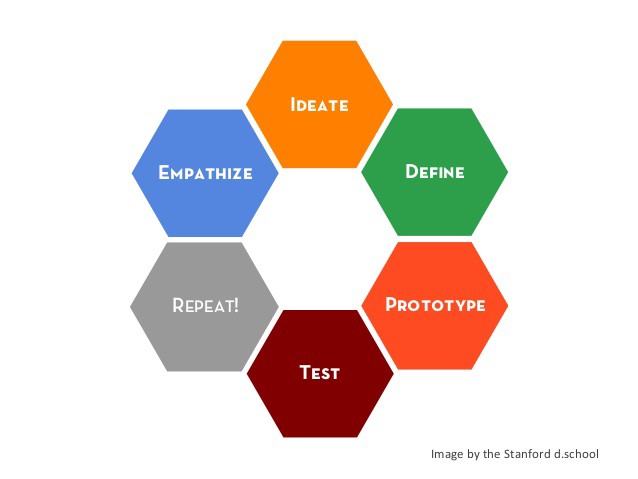
The way we frame the problem has a lot to do with the solutions we end up with.
As journalists, we are hard-wired to tackle difficulties head-on, asking direct questions, and looking for verifiable evidence to support the predictable outcome.
However, this strategy can feel too abrupt when we want to engage our communities. Truly engaging with people requires a deep understanding and that is precisely where direct questions may hamper the newsgathering process.
To learn how to empathise with people to authentically report their stories, we attended a workshop with Anja Svetina Nabergoj, one of the world’s leading experts in design thinking, lecturer at the Stanford University and the Hasso Plattner Institute of Design in the School of Engineering (aka d.school). The session took place last week (12 November 2019) at the European Community News Summit in Amsterdam.
Before diving deep into differences between analysis and synthesis, or convergent and divergent thinking, let us take a look at a concrete way journalists can use design thinking in their work.
One workshop participant was working on a long investigative piece on the use of food banks in England. When speaking to users, however, he would encounter a wall of silence which made his reporting near impossible.
"People are too embarrassed to talk about their situation," he explained. "Often, they do not see the point in talking to the press at all as they have felt left behind for such a long time."
In this situation, instead of showing up at a food bank with your notebook or camera and starting to fire up your questions, Nabergoj advises establishing an empathetic relationship with your interviewee. This can help you understand how to overcome their embarrassment and start to listen to their story.
"Asking people a direct question can often result in them saying what they think you may want to hear," she said.
Instead, she advised to simply ask the food bank user: 'When was the last time you felt empowered?' A whole new world of stories may open up to you.
By establishing an empathetic connection with the human you are interviewing, you can start to explore what makes them tick, patterns of behaviour or core values. This can provide invaluable insights into their personal journey and introduce new ways to let them tell their story.

So how does design thinking work? According to the Interaction Design Foundation, it is a process in which we seek to understand the user, challenge assumptions, and redefine problems to identify alternative strategies and solutions that might not be instantly apparent with our initial level of understanding.
At its most basic level, designer thinking helps you understand what solutions people need and testing whether that solution works before creating it.
The problem is that journalists do not empathise, prototype or test their articles with their communities before publishing. This means that they often think they serve their audience but they do not know for sure until after they have spent a vast amount of time, effort and money to pursue the story that does not resonate. If newsrooms want to be closer to their users they need to understand their pain points rather than trying to guess what readers want.
Applying this thinking, instead of interrogating a victim of domestic violence, an NHS nurse, or a witness of a car crash, you can explore how they experience events and then listen to their story.
In the example of the food bank user, understanding what makes them feel empowered can help the journalist formulate questions that will help them overcome the sense of shame or hostility.
You can ask your interviewee about their last memorable shopping experience or travel problem, for instance. Only when you understand their emotions and needs can you start to imagine new ways of interviewing that will help you produce authentic stories your audience genuinely wants to engage with.
Stories are important because they contain specific information and not just general statements your interviewee would tell you. Stories provide reporters with personalised information that can help them start exploring solutions to particular problems.
Additional resources
Standford's d.school offers some great materials to help you get to grips with design thinking, including this virtual crash course. If you are still wondering about the use of design thinking in journalism, including its different methods, check out this great post by Jennifer Brandel. Finally, the Interaction Design Foundation offers tons of resources, including this explainer.
Free daily newsletter
If you like our news and feature articles, you can sign up to receive our free daily (Mon-Fri) email newsletter (mobile friendly).
Related articles
- 10 creative ways to interview celebrities and experts
- How to report on homicide and interview grieving families
- How NRK uses AI-generated summaries to boost younger readers’ engagement
- Trust is not a "useless metric" - we just need to understand it better
- New playbook to help publishers boost content strategy









